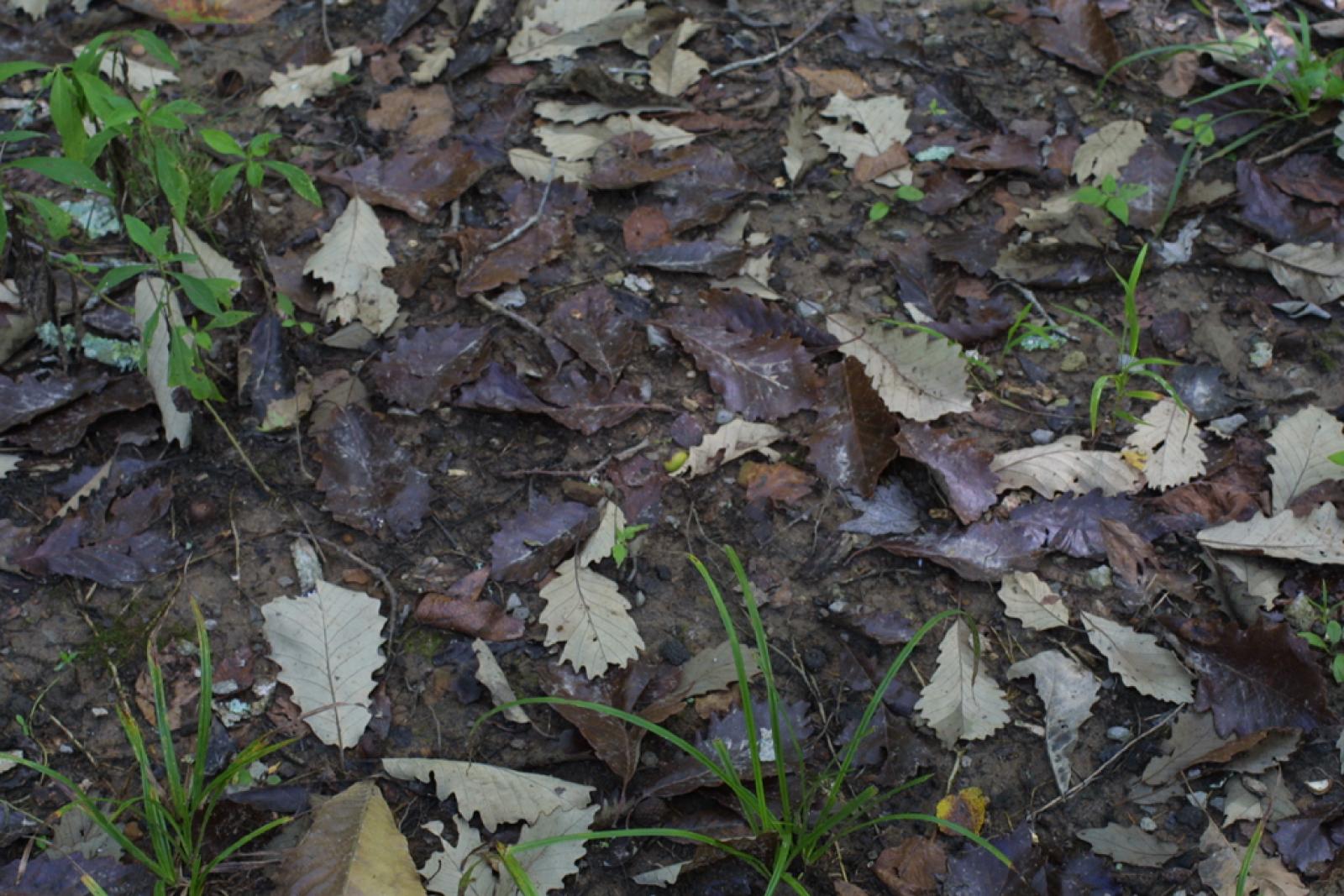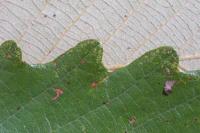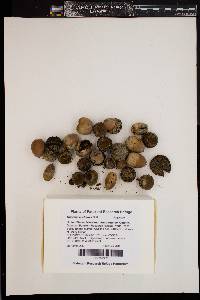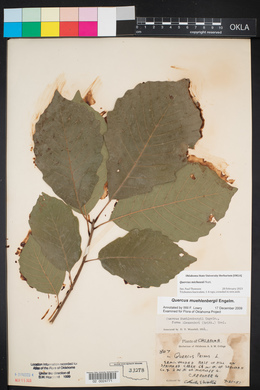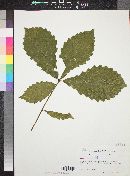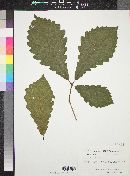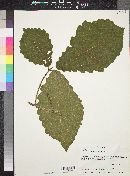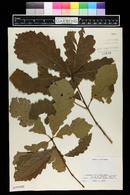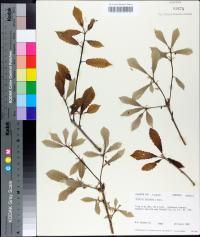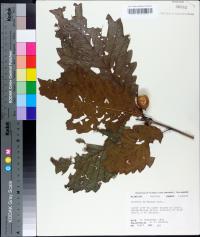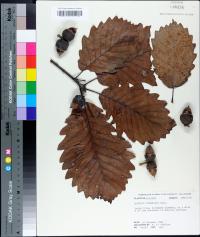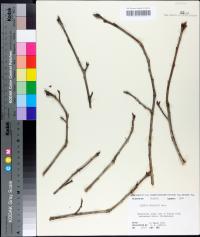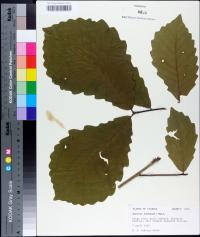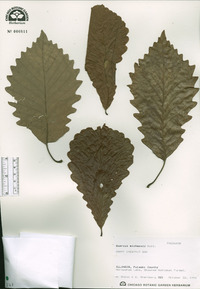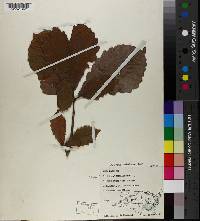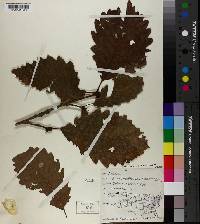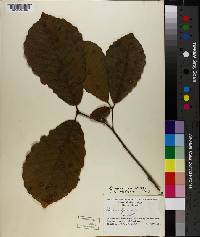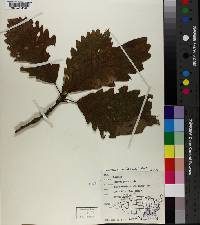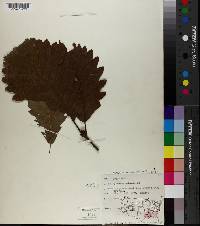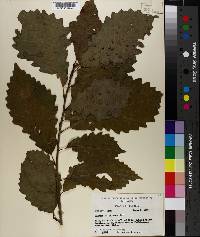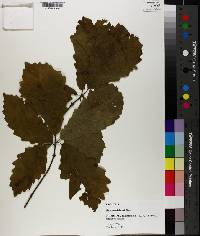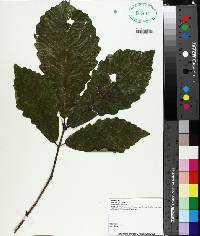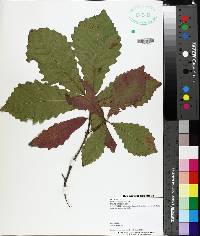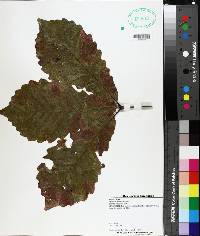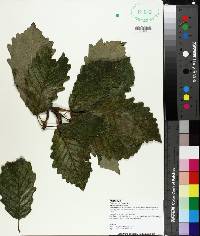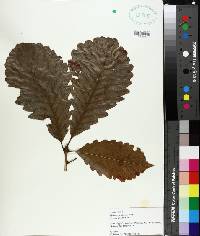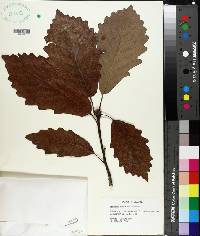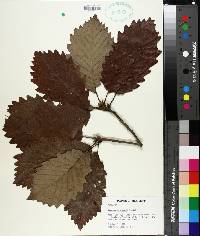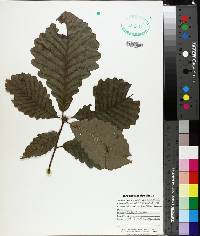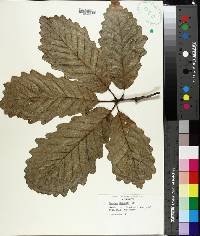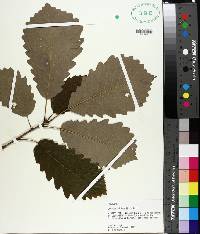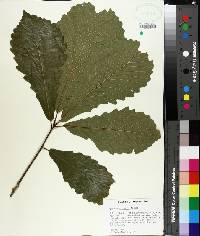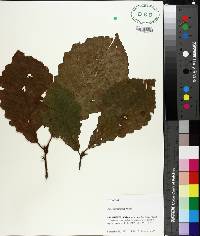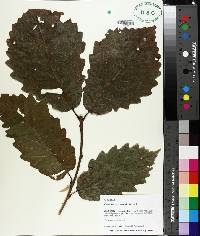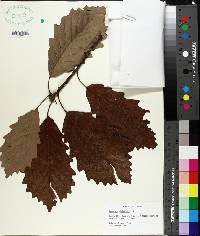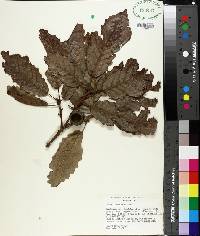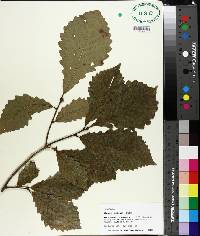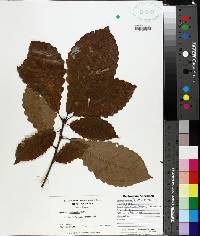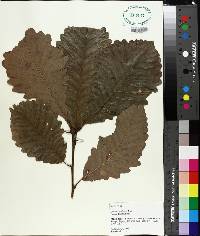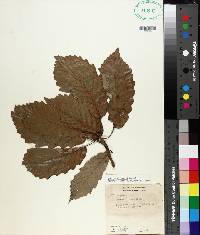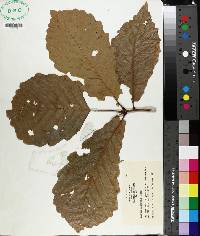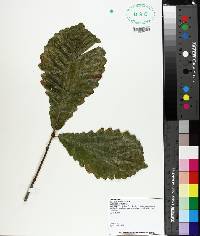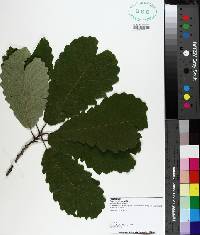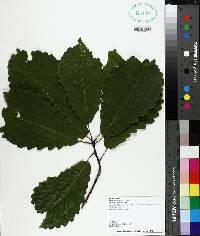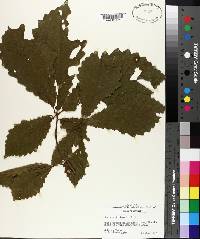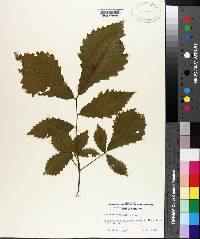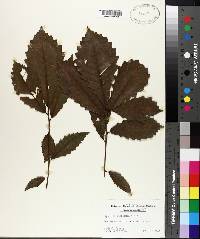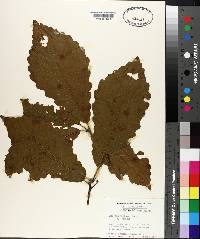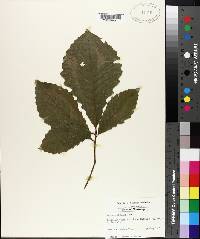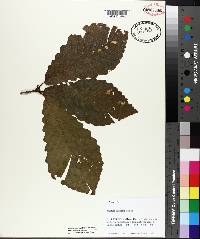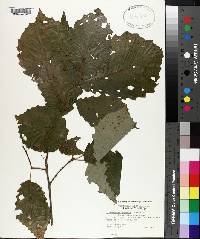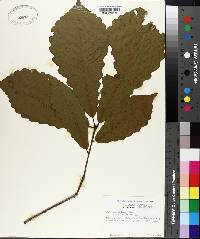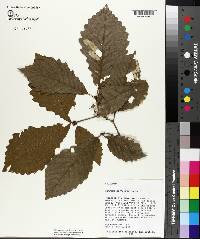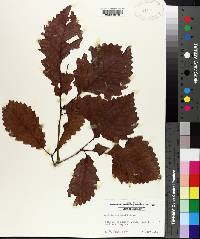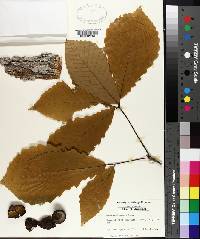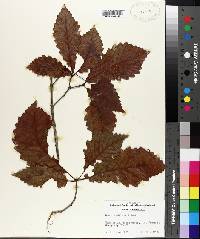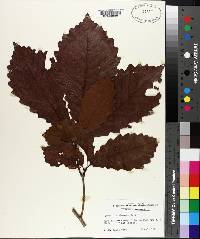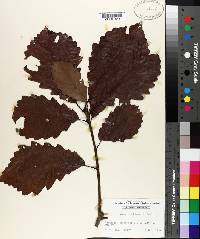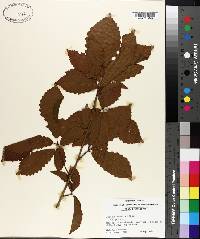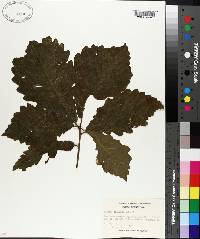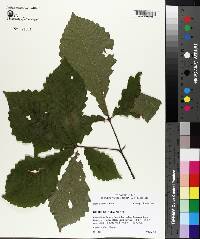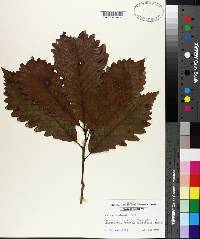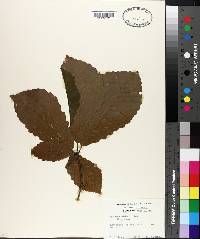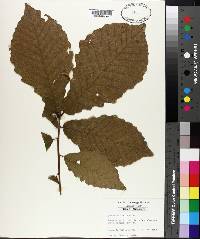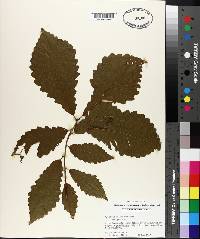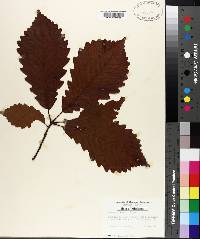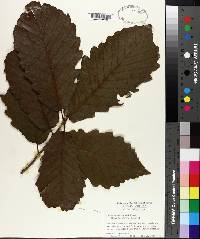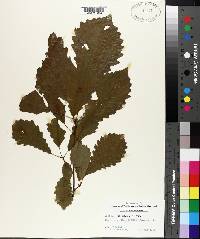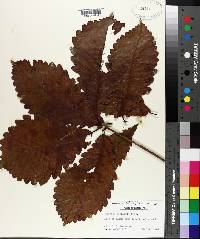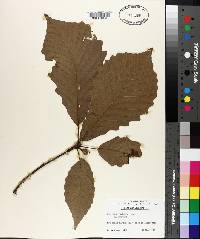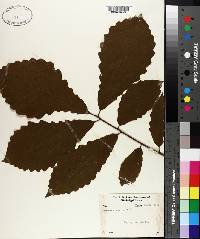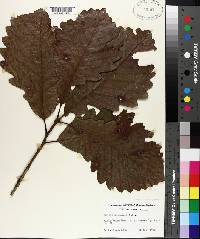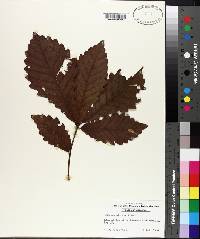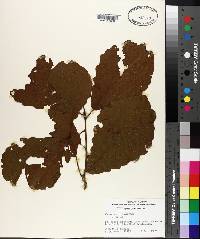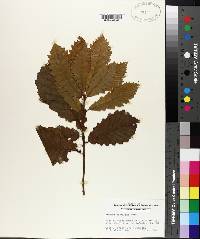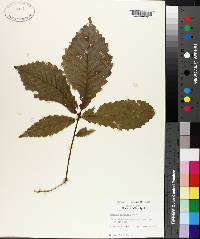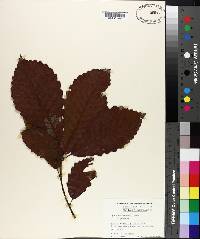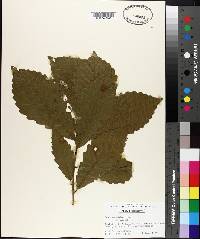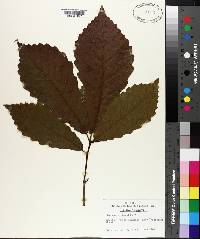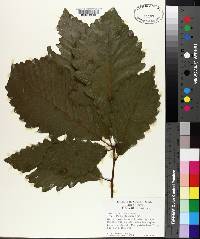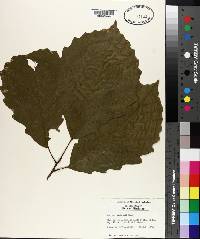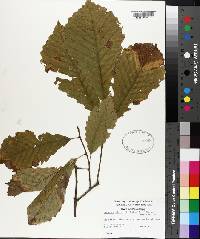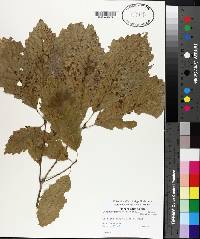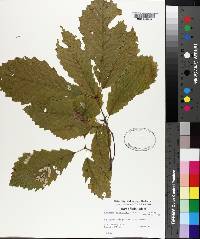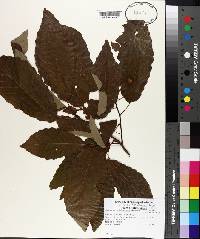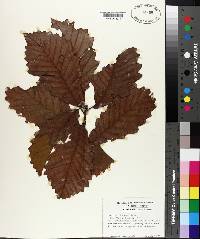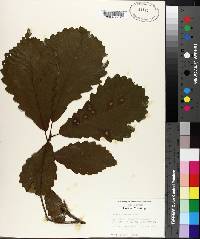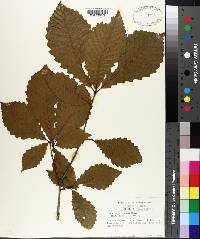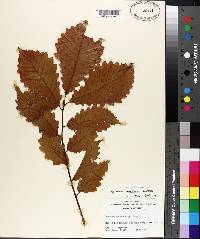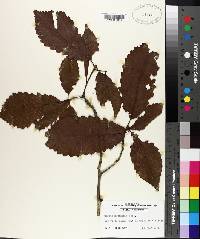Quercus michauxii
|
|
|
|
Family: Fagaceae
Swamp Chestnut Oak
[Quercus houstoniana C.H.Müll., moreQuercus prinus L., Quercus prinus var. michauxii] |
Trees , deciduous, to 20 m. Bark light brown or gray, scaly. Twigs brown or reddish brown, 2-3 mm diam., with sparse spreading hairs or glabrate. Buds reddish brown, ovoid, apex rounded or acute, glabrous or minutely puberulent. Leaves: petiole 5-20 mm. Leaf blade broadly obovate or broadly elliptic, (60-)100-280 × 50-180 mm, base rounded-acuminate or broadly cuneate, margins regularly toothed, teeth rounded, dentate, or acuminate, secondary veins 15-20 on each side, parallel, straight or somewhat curved, apex broadly rounded or acuminate; surfaces abaxially light green or yellowish, felty to touch because of conspicuous or minute, erect, 1-4-rayed hairs, adaxially glabrous or with minute simple or fascicled hairs. Acorns 1-3, subsessile or more often on axillary peduncle to 20-30 mm; cup hemispheric, broadly hemispheric or even short-cylindric, 15-25 mm deep × 25-40 mm wide, enclosing 1/2 nut or more, scales very loosely appressed, distinct to base, gray or light brown, moderately to heavily tuberculate, tips silky-tomentose; nut light brown, ovoid or cylindric, 25-35 × 20-25 mm, glabrous. Cotyledons distinct. Flowering early-late spring. Bottomlands, rich sandy woods and swamps, on variety of soils; 0-600 m; Ala., Ark., Del., Fla., Ga., Ill., Ind., Ky., La., Md., Miss., Mo., N.J., N.C., Pa., S.C., Tenn., Tex., Va. Quercus michauxii is easily distinguished from other chestnut-leaved oaks by the felty hairs of the abaxial leaf surface and rather large acorn cups with attenuate-acute, loose scales. This species is no longer extant in Oklahoma. Historical reports from Connecticut, Massachusetts, and New York have not been confirmed; possibly populations are no longer extant. (See Quercus montana for a discussion of nomenclature and the uncertain application of the name Q . prinus ).
Tree to 30 m, with light gray bark like no. 1 [Quercus alba L.]; petioles to 3 cm, persistently pubescent beneath, glabrescent above; blades obovate, 7-11 cm wide, with 10-15 pairs of ovate or triangular, rather uniform, acute to rounded, usually ascending teeth, pubescent beneath with erect, few-branched hairs; acorns 2.5-3.5 cm, the cup covering half the ovoid or conic-ovoid nut, 2-3 cm wide, its large scales free and when dry often spreading. Low or wet soil, especially alluvial flood-plains; coastal plain from N.J. to Fla. and Tex., n. in the interior to Mo. and s. Ind., and at scattered stations in Ky. and Tenn. (Q. prinus, misapplied) Gleason, Henry A. & Cronquist, Arthur J. 1991. Manual of vascular plants of northeastern United States and adjacent Canada. lxxv + 910 pp. ©The New York Botanical Garden. All rights reserved. Used by permission. Tree to 30 m, with thick, deeply furrowed, dark bark; lvs obovate to oblong or even ovate, cuneate to rounded at base, the lower surface green or grayish, thinly pubescent with flatly appressed, spreading, stellate hairs, each margin with 10-15 rather regular, oval, obtuse teeth; acorns 2.5-3.5 cm, the cup hemispheric, 2 cm wide, its comparatively few scales almost completely concrescent, covering a third to half the nut. Dry or moist, upland or rocky woods, chiefly in the Appalachian region and its foothills; Me. to n. Ga., extending to the coast as far s. as Va., and w. to s. Ill. and n. Miss.; disjunct in s. Mich. (Q. montana) The identity of the Linnaean type of Q. prinus is debatable. We here follow current usage. Gleason, Henry A. & Cronquist, Arthur J. 1991. Manual of vascular plants of northeastern United States and adjacent Canada. lxxv + 910 pp. ©The New York Botanical Garden. All rights reserved. Used by permission. From Flora of Indiana (1940) by Charles C. Deam This species is restricted to low, flat woods of the southern part of the state. It is local in the southwestern part although it forms about 20 per cent of the stand in a few of the woods along Prairie Creek in Daviess County. It is more frequent in the "flats" of the southeastern part of the state where it is associated with sweet gum, red maple, and pin oak. …… Indiana Coefficient of Conservatism: C = 7 Wetland Indicator Status: FACW Deam (1932): Wood and uses similar to white oak. In the "flats" of southeastern Indiana it is generally called white oak, and in some places it is known as bur oak. Outside of Indiana it is known as cow or basket oak. In order to avoid confusion the United States Forest Service has adopted the name, swamp chestnut oak. It grows rapidly and to a large size. A tree was measured in 1919 in the Klein woods about 4 miles north of North Vernon that was 3.57 m (11 ft, 7 in) in circumference, breast high, and was estimated to be 15 m (50 ft) to the first branch. This species when grown in the open forms a large oval head, and in moist soil would make one of the best shade and roadside trees to be had. |

